
Hope for a huge, ancient and imperilled fish
First Nations are leading efforts to make sure lake sturgeon can find a home in...
“Windsor is flat as a pancake and surrounded by water,” Mayor Drew Dilkens says, gesturing at the wall-sized satellite map of Canada’s southernmost city tacked up in his office.
His point: there are not that many places to grow. Figuring out how to build more houses fast is every Ontario city’s current mandate, as handed down last fall in the Doug Ford government’s sweeping housing legislation, Bill 23.
With the Detroit River — which naturally divides this part of Canada and the United States — all along the north and west of Windsor, and farmland to the south and east, every available unused parcel of land that can be built on has been built on, Dilkens says.
Which means there’s only one place left to house a growing population: farmland. Dilkens wants to build an industrial park, a hospital and thousands of units of residential housing on hundreds of hectares of agricultural space at the southeastern edge of the city.
It’s not a universally loved proposal in the city or the region, and has been fiercely debated for a decade as farmland development could lock in sprawl forever. But Dilkens — councillor since 2006, mayor since 2014 and presently the chair of the Ford government’s housing committee — says he has no other choice.
Windsor is going through a transformation, perhaps even a reincarnation. It’s the first city in Canada to get an electric-vehicle battery manufacturing facility, which many hope will jumpstart its sputtering auto sector. It’s also close to getting the country’s second national urban park, the first in Ontario to be co-managed by First Nations. Development is at record levels as the city contends with renewed interest in the region.
But at what cost?
In March, The Narwhal spent an hour with Dilkens discussing change in Windsor and the trade-offs between development and environment. It’s a conversation happening across southern Ontario as construction and concrete edge out greenspace and farmland. How Dilkens and Windsor navigate these choices could have rippling effects across the province.
This interview has been edited for clarity and length.
I’d like to flip it the other way and say that Windsor is actually the start of the supply chain. That when you cross the [U.S-Canada] bridge, this is the southernmost city you’re starting at.
But I understand what you’re saying.
What I hear from the premier, and what I see happening, is very strategic moves to position Ontario to be a leader in this automotive space. And the mining and the minerals that are in the north, around the Ring of Fire, are a critical part of that and the province is taking steps to actually open that up to allow the supply chain to be fully developed from the north to the south.
There is no doubt we’re going to have some growing pains and there’s no doubt everyone wishes it would happen sooner.
When we look at Windsor … we know we’re part of Canada, of course, and part of Ontario, and we’re creatures of the province and we always look to Toronto as well. But our region here is really Detroit. It’s Windsor-Detroit as a broader region, so when Detroit builds a brand new Chrysler manufacturing facility downtown we benefit. When we build a battery manufacturing facility, they benefit too. Our supply chains are so tightly integrated. … We rely on that bridge: it’s the busiest commercial border crossing between our two countries. And so for over 100 years, the supply chains have built up very nicely and very efficiently on both sides of the border.
I remember past provincial governments talking about opening up the Ring of Fire. It’s expensive and it never moved very far. This government seems very, very committed and is making moves that I think the public should see as very positive to help feed the supply chain that will help our city grow.
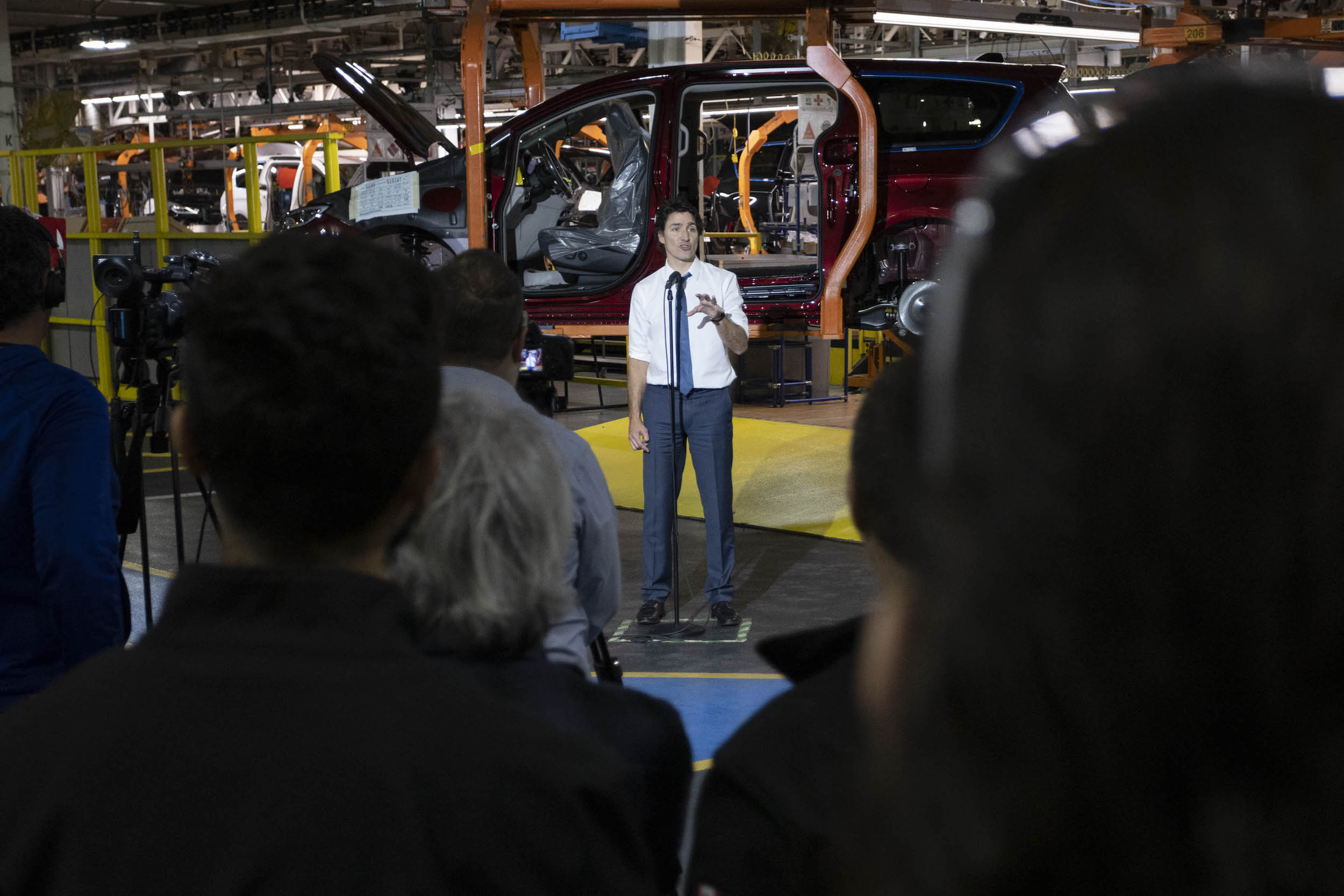
I have no doubts … It’s probably a decade away if we’re all being realistic about it. Give it 10 years … we’ll have the minerals and the majority of the new vehicles sold will be electric.
Look, Windsor is flat as a pancake and surrounded by water. During the pandemic, we had the added complexity of high water levels in the Great Lakes. Many residents on the riverside were sandbagging their homes.
So it is a problem, but when you look at the city, unless you start knocking down neighborhoods and going up, there’s only one place left where you can really build.
It is farmland today.
Well, I think from an urban perspective we have to do what cities do and you don’t usually find farmland in a city. Farmland is usually in rural municipalities.
We have to grow … What we’re trying to do is acquire about 1,000 acres, while it’s cheap, while it’s farmland, for the purposes of having an industrial park.
If you look at the battery factory, that’s about 250 acres of land, just rounding it up. If we had an opportunity to build another plant half the size of the battery factory, and you look at the map … Where would you put it? Where would you go if you had another industrial opportunity?
The only luck we have is the luck we create. I have no other real industrial land in the city available, so I want to make this the closest industrial park to the U.S.-Canada border on the Canadian side.
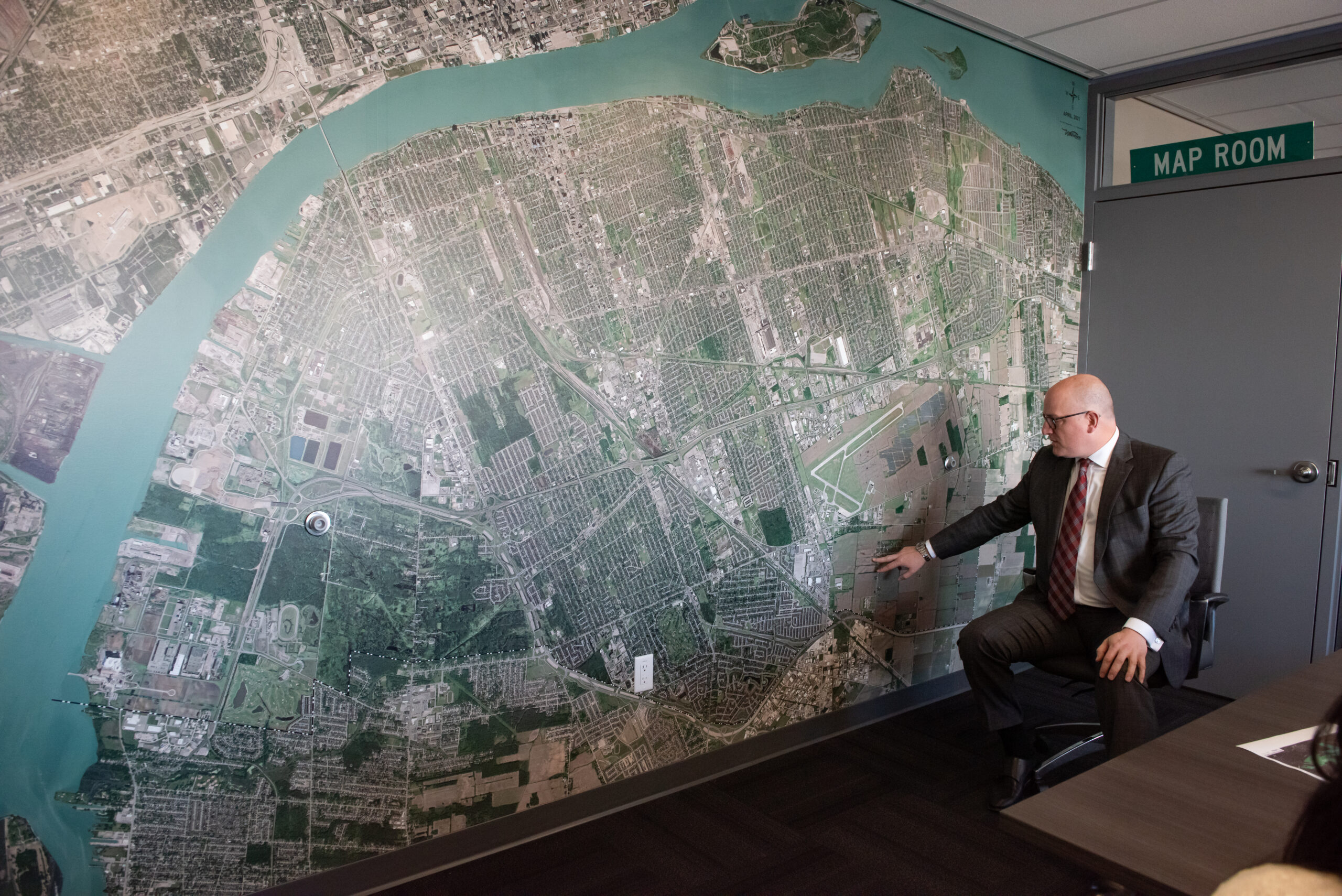
From a city perspective, absolutely. Where else are we going to build?
All of the development [in the farmland] has actually been held up while the conservation authority does their study to make sure that any building is done to the proper elevation because this is a floodplain. So, whatever happens here, the developers, the hospital, anyone who’s building here will have to build up …
The reality is I don’t think anyone wants to buy a house if it’s on a floodplain and it’s not treated properly. Notwithstanding some of the things you just said about conservation authorities and some of the changes in powers, I still think there’s a common sense element to this …
Correct.
How?
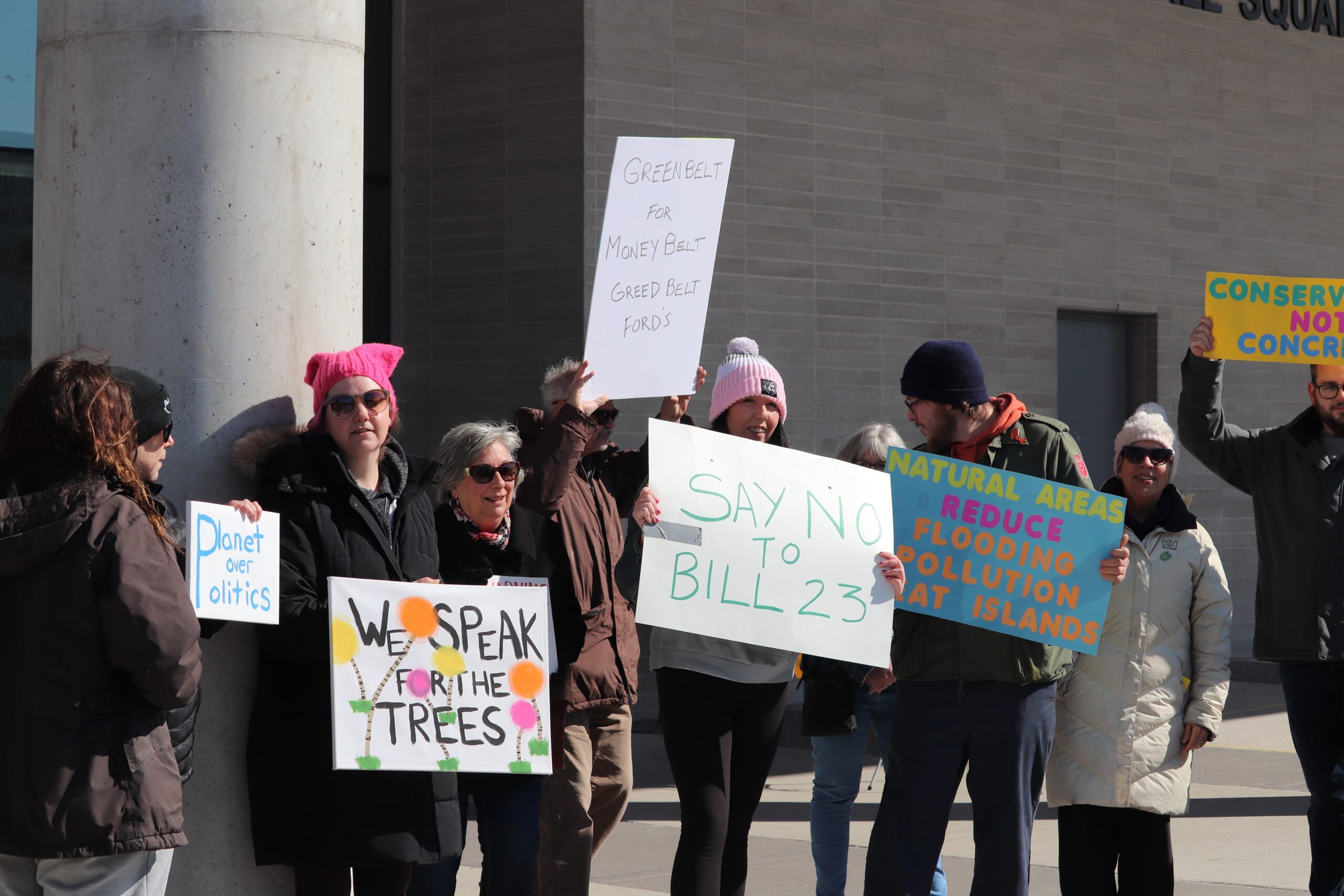
We’ve seen record development here in the city of Windsor. It’s been unbelievable in the last five years. We now have Toronto-style price issues. … My own daughter, she’s 21, graduating from nursing school next month, 10 years ago she could have gone to work in Detroit, lived at home for a year, saved enough for a down payment and bought a nice starter house for $175,000, and never moved out. That same house today is $600,000 to $700,000 and my daughter, who’s going to make $33 an hour to start, she’s going to have to live at home for several years and put every penny in the bank to get a down payment.
I bet you there are a lot of families in Toronto who never think that they’ll ever buy a house. It’s just not part of the equation. Here, it was just the opposite. It was always about homeownership.
Now, you have people starting to have that uncomfortable conversation going, “will I ever be able to afford a house?”
That has led to huge infill projects happening on any piece of land that is vacant. … People are snapping them up and building something. We’ve seen more multi-storey, multi-residential developments than at any other time in our history. We’re trying to do this in a sensible way … but we have to double our output.
You have to build it up. I’m not trying to short circuit or shortcut the work that needs to be done. If [the conservation authority] tells us we need to build up the elevation, that’s what the developer is going to have to do.
There are environmental assessments for every road construction. The city is an access point to the Detroit River, everything has to be mapped out.
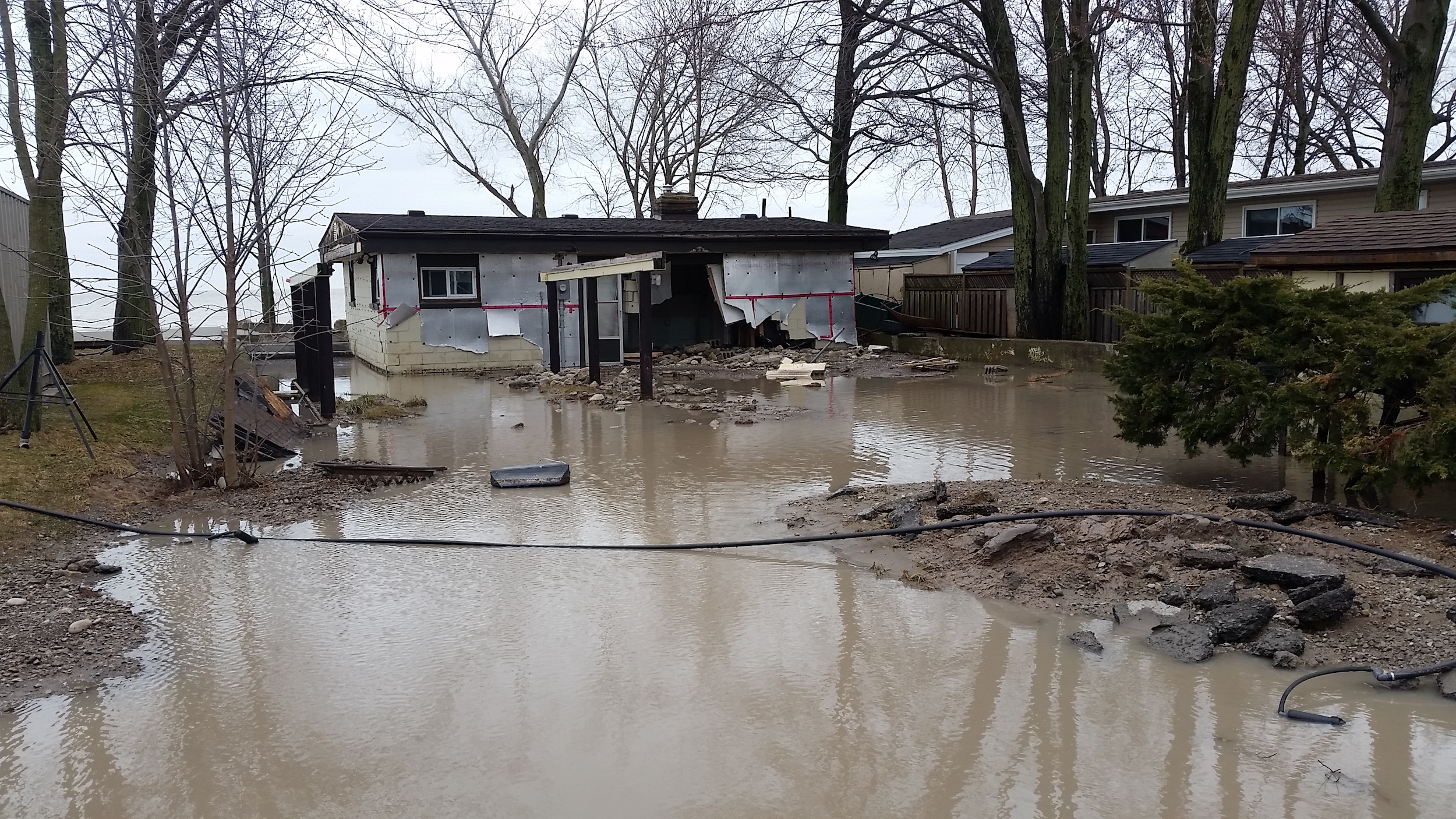
It’s a lot of money and a lot of time and a lot of effort to make this land ready.
I don’t know that we ever got provincial support before for that, but it would be a developer’s responsibility.
Housing Plan Action Plan Implementation Team. I had to practice that. I wish it was a tighter acronym.
There’s nothing I can tell you yet.
When I was first asked if I would take this role on, my question to [Municipal Affairs and Housing Minister Steve Clark] was: “Is this actually going to be meaningful work?” Because there are enough other ways to spin your wheels. If we were going to do something, I wanted to be part of something meaningful. He assured me it was absolutely going to be a meaningful exercise for them. What the provincial government’s looking for is not for a committee to prepare a report that’s going to be tabled in public. They’ve done all that work with the housing supply plans that they’ve put out there.
This is: how can we get people of industry together? How can we meet with communities and the people who are responsible for helping build the 1.5 million homes in 10 years to try and remove barriers and get things streamlined as efficiently and effectively as possible? And it doesn’t mean they’re steamrolling legislation or anything like that.
We have a collective goal here to help them because, if they win, then we win. We have huge pressures in the community. Housing is a central issue. Federally, provincially, municipally.
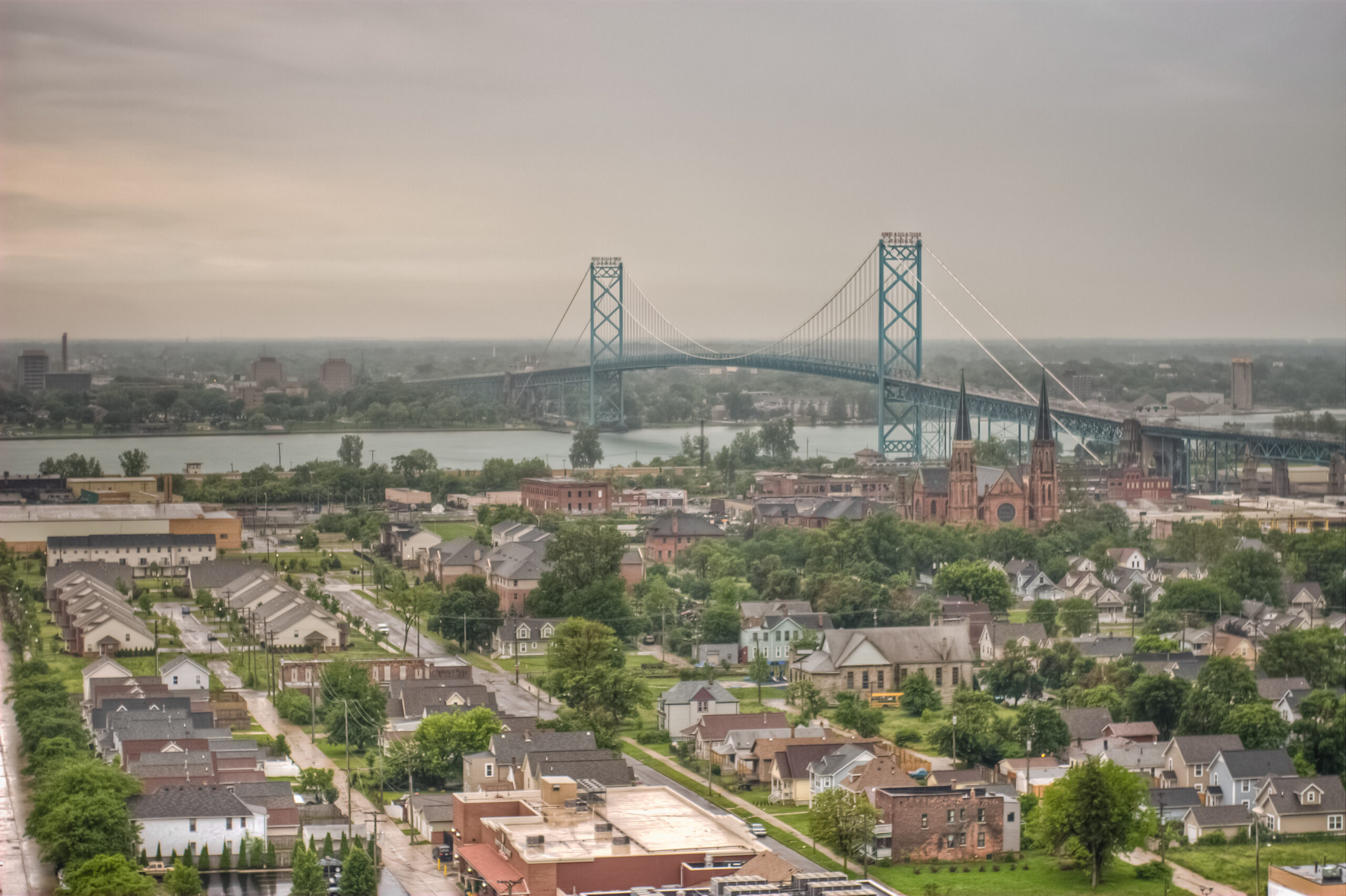
From my perspective here, if there was another opportunity, whether it’s battery-factory-sized or smaller, I ask, “Where are you going to go in Windsor?” I think, well, let me rise up, maybe there are neighbouring municipalities who have industrial land where we could host these types of projects. But there isn’t any. There isn’t any industrial land of decent size in Essex County serviced and ready to go.
If we don’t take action and do something here, we are basically saying we’re willing to see any economic growth and future go to Michigan, Ohio, Indiana, Kentucky or somewhere else up the 401. And I can’t sit back and just wait and hope that someone else figures it out and not try and prepare the community for future growth.
It’s fair. I mean and it’s not a conversation I shy away from. It’s just how do we, how do we … I mean I have a job to do. I want to do it sensibly. I want to do it fairly. I want to do it responsibly. But I still have to do it.
Get the inside scoop on The Narwhal’s environment and climate reporting by signing up for our free newsletter. Angello Johnson’s shoulders burn, and his arms...
Continue reading
First Nations are leading efforts to make sure lake sturgeon can find a home in...

We’re excited to share that an investigation by The Narwhal is a finalist for the...

A new documentary, Nechako: It Will Be a Big River Again, dives into how two...
